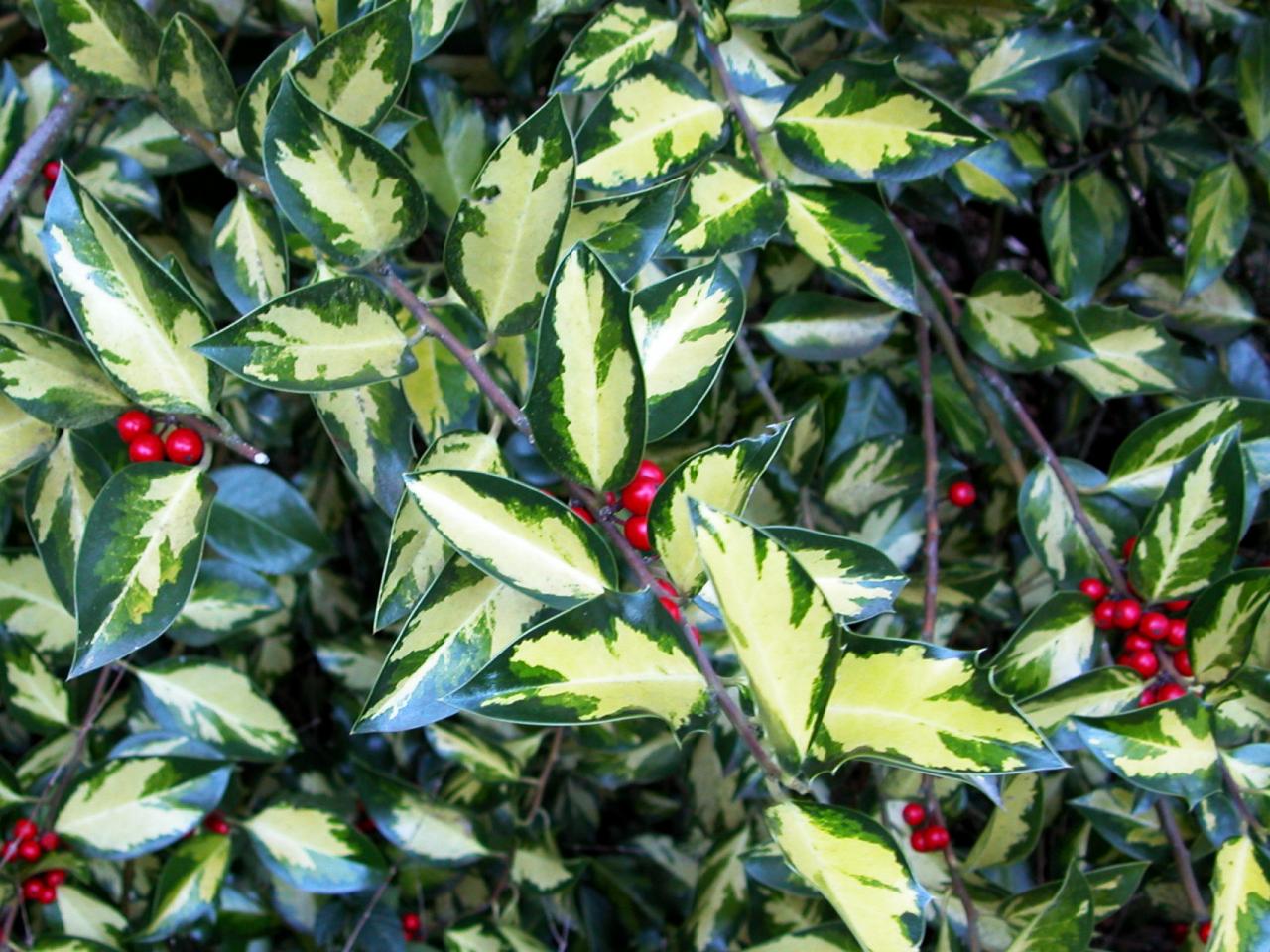Why Prune Holly Bushes?
Pruning is a crucial aspect of holly bush maintenance, as it plays a vital role in promoting healthy growth, encouraging dense foliage, and enhancing their natural shape. By pruning, you can control the size and shape of your holly bushes, making them a beautiful addition to your garden or landscape. Pruning also helps to remove dead or damaged branches, which can improve the overall appearance of the bush and prevent the spread of disease. Additionally, pruning can stimulate new growth, leading to a fuller and more vibrant holly bush. Whether you’re looking to create a topiary, hedge, or simply maintain a healthy specimen plant, pruning is a crucial step in achieving your desired outcome.
Understanding Holly Bush Anatomy
To prune holly bushes effectively, it’s essential to understand their anatomy. A holly bush consists of stems, leaves, and berries, each responding differently to pruning. The stems provide the framework for the bush, and pruning them can control the overall shape and size. The leaves are the primary organs for photosynthesis, and pruning them can stimulate new growth. Berries, a key feature of holly bushes, are an important consideration when pruning, as they can be encouraged or discouraged depending on the desired outcome. By understanding how each part of the holly bush responds to pruning, you can make informed decisions about how to trim and shape your bushes.
How to Trim Holly Bushes: A Step-by-Step Guide
To trim holly bushes effectively, it’s essential to have the right tools and techniques. Start by gathering a pair of sharp, clean pruning shears or loppers, depending on the size of the branches you need to trim. Wear protective gloves and safety glasses to prevent injury from thorns or debris. Before pruning, inspect the bush for any dead, diseased, or damaged branches, and remove them to prevent the spread of disease and encourage healthy growth. Next, identify the branches that need to be trimmed to achieve the desired shape or size. Cut branches at a 45-degree angle, about 1/4 inch above a leaf node, using a clean, smooth cut. Make cuts outside the branch collar, the raised area where the branch meets the stem, to prevent damaging the bush. When trimming, work from the bottom of the bush up, removing any weak or spindly growth to encourage a fuller, more dense shape. Finally, step back regularly to assess your progress and make adjustments as needed. By following these steps, you can trim your holly bushes with confidence and achieve the desired shape and size.
How Far Back Can You Trim Holly Bushes?
When it comes to trimming holly bushes, one of the most common questions is how far back can you trim them without causing damage. The answer depends on several factors, including the age and health of the bush. For young or newly planted holly bushes, it’s best to trim only the tips of the branches to encourage bushy growth and prevent shocking the plant. For more mature holly bushes, you can trim back up to one-third of the branch length without causing harm. However, it’s essential to consider the overall health of the bush before making significant cuts. If the bush is stressed or diseased, it’s best to trim only the minimum amount necessary to maintain its shape and promote healthy growth. Additionally, consider the time of year and prune holly bushes during their dormant season to minimize stress and promote healthy regrowth. By understanding how far back you can trim holly bushes, you can confidently prune your bushes to achieve the desired shape and size without causing damage.
Pruning Techniques for Different Holly Bush Shapes
Pruning holly bushes is not only essential for maintaining their health and promoting dense foliage, but it’s also a crucial step in achieving the desired shape and size. Whether you’re looking to create a topiary, a hedge, or a specimen plant, pruning techniques can make all the difference. For topiaries, prune holly bushes to maintain a symmetrical shape, removing any branches that grow outside the desired shape. For hedges, prune regularly to maintain a uniform height and width, using a hedge trimmer to create a clean, straight edge. For specimen plants, prune to accentuate the natural shape of the bush, removing any branches that grow inwards or cross over other branches. Additionally, consider the variety of holly bush you’re working with, as some species, such as English holly, require more frequent pruning than others, like American holly. By understanding the specific pruning techniques required for different holly bush shapes, you can create a beautiful, well-manicured landscape that adds value and curb appeal to your property.
Common Mistakes to Avoid When Trimming Holly Bushes
While pruning holly bushes is essential for their health and appearance, it’s equally important to avoid common mistakes that can cause damage or stress to the plant. One of the most critical mistakes to avoid is over-pruning, which can lead to weakened branches and reduced foliage. Another mistake is pruning at the wrong time, such as during the active growing season, which can cause new growth to be weak and vulnerable to disease. Additionally, failing to use clean and sharp tools can spread diseases and pests from one plant to another. It’s also essential to avoid pruning holly bushes when they’re stressed or diseased, as this can exacerbate the problem and lead to further decline. Furthermore, pruning too much of the plant’s foliage can reduce its ability to photosynthesize, leading to weakened growth and reduced berry production. By being aware of these common mistakes and taking steps to avoid them, you can ensure that your holly bushes remain healthy, thriving, and attractive throughout the year.
Aftercare and Maintenance
After pruning holly bushes, it’s essential to provide proper aftercare and maintenance to ensure the plant recovers quickly and continues to thrive. One of the most critical steps is to water the plant thoroughly, especially during the first few weeks after pruning. This will help the plant recover from any stress caused by the pruning process. Additionally, fertilizing the plant with a balanced fertilizer can provide essential nutrients for healthy growth and development. It’s also important to protect the plant from pests and diseases, which can be more prevalent after pruning. Regularly inspect the plant for signs of pests or diseases, and take action promptly if any issues are detected. Furthermore, mulching around the base of the plant can help retain moisture, suppress weeds, and regulate soil temperature. By following these aftercare and maintenance tips, you can help your holly bushes recover quickly from pruning and maintain their health and attractiveness throughout the year. Remember to prune your holly bushes regularly to maintain their shape and promote healthy growth, and consider how far back you can trim holly bushes without causing damage to ensure the best results.
Pruning Holly Bushes for Year-Round Interest
Pruning holly bushes is not only essential for maintaining their shape and promoting healthy growth, but it can also help maintain their attractiveness throughout the year. By pruning holly bushes at the right time and in the right way, you can encourage the production of berries, flowers, and vibrant fall color. For example, pruning holly bushes in the late winter or early spring can help promote berry production, as it allows the plant to focus its energy on producing fruit. Similarly, pruning in the summer can help encourage new growth and promote a fuller, denser shape. Additionally, pruning holly bushes to maintain a compact shape can help promote fall color, as the plant is able to direct its energy towards producing vibrant foliage. By considering how far back you can trim holly bushes without causing damage, and pruning at the right time, you can enjoy year-round interest from your holly bushes. Whether you’re looking to create a stunning winter display, a vibrant summer hedge, or a beautiful fall border, pruning holly bushes is an essential step in achieving your goals.








